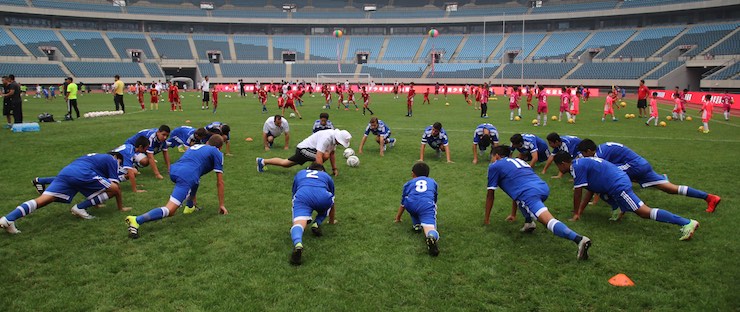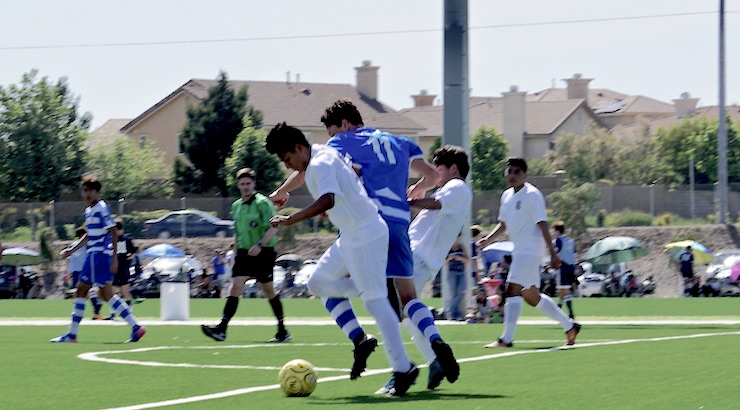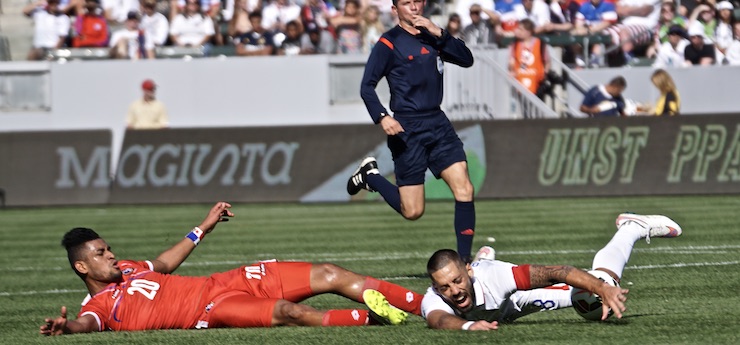John Gallucci on Minimizing the Risk of Injury and Maintaining a Good Recovery Practices
As a player continues his or her development during the years of adolescence, maintaining vigorous stretching habits is a must before and after training. When a soccer player is injured, all they want to do is return to the field and play — if only they knew stretching could significantly minimize the risk of injuries ….
Proper stretching allows players to sustain muscle strength and improve endurance — and handle the physical stress of repeated training and playing sessions.
Here is great advice on the importance of stretching from an expert who is responsible for the professional players in the MLS — John Gallucci Jr., MLS Medical Coordinator.
Related Article: Preparing for a Youth Soccer Tournament; Soccer Injury Recovery: What Parents Need to Know
Soccer News: It is widely accepted across the world of athletics, to include soccer, that stretching or a flexibility program is the main component of one’s warm-up and cool-down.
It’s the reason why we ask our athletes to show up to practice thirty minutes early and the reason why they stay are asked to stay fifteen minutes after the last minute ticks off the game clock, right?

However, in my days as a physical therapist, athletic trainer, coach, and parent, I have had the opportunity to stand on the sideline and watch how flexibility programs are being conducted.
Although everyone is running through the motions, I am not sure if they understand the importance of what they are doing!
Why is stretching important?
Simply put, stretching and flexibility programs are just as important as a strength and conditioning program and should not be taken lightly or skipped due to a shortage of time in the schedule.
Think about your team’s stretching program. Do you break a sweat?
Are you focused rather than catching up with friends about the day’s events? Are the motions similar to that of the activity that you are doing on the field?
If you answered no to any of these questions, then it is time to alter that program and to understand the benefits of a properly executed program.

Benefits
- Improves athletic performance due to increased muscle readiness.
- Decreases risk of traumatic or overuse injuries.
- Helps joints move through their full range of motion.
- Enables muscles to work most effectively.
Why do we stretch?
Daily stretching is the only way to ensure that we are keeping our muscles strong, long, lean and flexible.
Soccer athletes, due to the repetitive nature of their sport, are at an increased risk of sustaining a muscular injury, especially if they are not focused on flexibility.
Without stretching, muscles can shorten, tighten and are more susceptible to tearing.

Think about it, soccer athletes ask their body to perform at a high level for 90 minutes where they run, cut, jump and backpedal on average 7 miles per game, which does not include the time they spend on the practice field.
This strenuous workload that is placed on a soccer athlete’s muscles can cause muscle damage and breakdown — ultimately pain and tightness due to new cellular growth.
To combat the pain and tightness that is felt following soccer activities, our cool-down sessions should gradually lower the heart rate back to normal and should include static, or stationary stretches that focus on the muscle groups utilized during the activity.
 In terms of a proper warm-up, it is important that we are readying the body for the motions and actions that we will soon be asking our body to perform.
In terms of a proper warm-up, it is important that we are readying the body for the motions and actions that we will soon be asking our body to perform.
- Think of your muscle as a rubber band; if it is warm outside and you pull a rubber band it stretches very easily.
- If you stick the rubber band in a freezer and try to stretch it, it will break beyond repair.
The same rules apply to the muscles in the body. Performing a dynamic, or active, warm-up prepares the body by getting the blood pumping to the muscles, which in turn warms them up — temperature wise — and leads to a decreased risk of muscle tears during activity.
How can I improve my flexibility?
In order to increase one’s level of flexibility, I recommend that every athlete performs some sort of flexibility workout every day. However, it is important to note that flexibility does not happen overnight and that the athlete must stay committed to the process.
During static stretching, which is typically performed following activity, each major muscle group should be stretched slowly and with control, holding each stretch for 1 to 3 sets of 30 to 60 seconds.
Hold each stretch at the point of mild tension or tightness, not to the point of pain.
Static stretching should not be done as a warm-up to an activity as you could injure your muscles if stretching them when they are cold.
During dynamic stretching, which is typically performed prior to athletic activity, the athlete should be actively engaged in activities such as jogging, sprinting, cutting and jumping as a means to increase their heart rate and get the blood pumping to the muscles.

For more information in regards to common injuries and rehabilitation, please be sure to check out Soccer Injury Prevention and Treatment: A Guide to Optimal Performance for Players, Parents, and Coaches written by John Gallucci Jr., MS, ATC, PT, DPT.
John Gallucci’s book is available on Amazon on his JAG Physical Therapy site.
RELATED ARTICLES: In Soccer: What To Expect While Recovering; ACL INJURIES: Why Female Soccer Players Are At Greater Risk & What You Can Do







